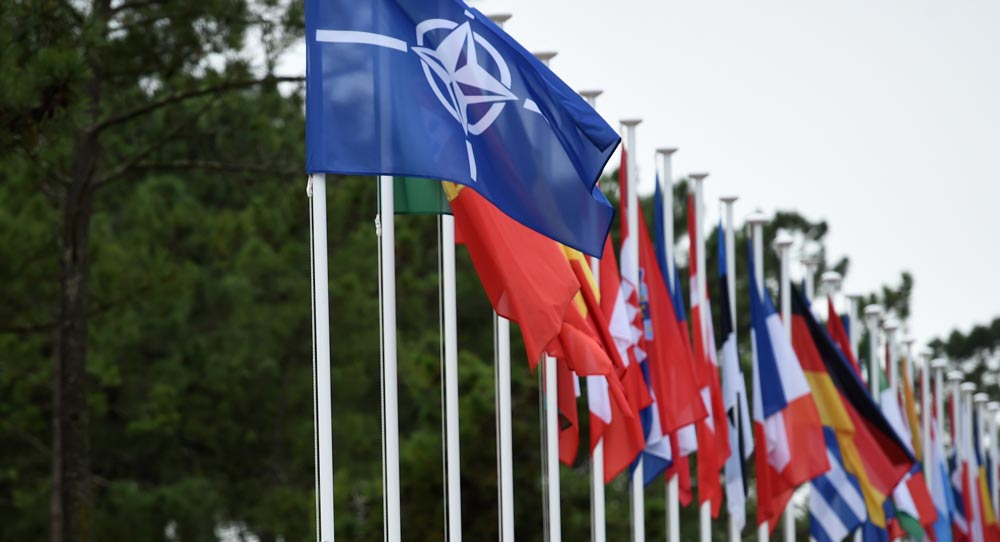A more competitive international environment, and in particular Russia’s assertive policies, has sparked renewed interest in the concept of nuclear deterrence in Western defense strategies. For NATO, this rediscovery has manifested itself (among other things) in a thorough analysis of Russia’s nuclear policy and posture, renewed attention to NATO’s own nuclear arrangements, and a stronger emphasis on nuclear deterrence and nuclear arms control in public statements.
But there’s more. Major changes in the global nuclear landscape, including in nuclear governance, may soon put renewed pressure on this important part of NATO’s deterrence strategy. Allies need to look not only at the challenges posed by Russia’s nuclear modernization, but also ponder the implications of other—potentially much more far-reaching—changes. Three areas stand out.
First: nuclear use. In the fall of 2017, North Korea’s foreign minister warned that his country could detonate a nuclear device over the Pacific. Such an incident—even if it were only intended for political “signaling” purposes and would not cause major casualties—would be a game changer of tremendous significance, deepening the rifts that characterize the current nuclear debate. For some, it would reinforce the conviction that nuclear deterrence remains essential for prevailing in a nuclear world. Others would see nuclear use as a sign that nuclear weapons have failed as a means of inducing restraint in international relations. In short, the open societies of Western nuclear-weapon states and their allies could be heading for an acrimonious debate.
Second: a major non-nuclear attack against the nuclear military infrastructure of a nuclear-weapon state. A cyberattack, for example, that would lead to a temporary loss of control over nuclear weapons could foster the perception among the broader public that nuclear weapons are no longer a security provider but a security liability. Although the 2018 U.S. Nuclear Posture Review does not explicitly refer to cyberattacks, its emphasis on the need to deter “significant non-nuclear strategic attacks” on, inter alia, nuclear forces and their command and control capabilities, indicates an awareness of this emerging challenge.
Third: a major change in the legal framework for nuclear governance. A Treaty on the Prohibition of Nuclear Weapons, which seeks to stigmatize nuclear weapons as illegal, is now well under way. But because nuclear-weapon states (and their allies) cannot be bound by a treaty that they persistently object to, it will not lead to global nuclear abolition. However, it could deepen the rift between nuclear and some non-nuclear-weapon states, as well as complicate NATO’s relations with some partner countries. Moreover, designating nuclear weapons as illegal could also pull the rug from under the Treaty on the Non-Proliferation of Nuclear Weapons (NPT), which remains the only near-universal framework for the regulation of nuclear possession and non-possession.
These game changers would not only affect NATO’s security environment, but could also challenge its political cohesion. Three pointers could help frame the future intra-alliance discourse on nuclear deterrence.
First, maintaining a cogent nuclear deterrence narrative. Given the deterioration of the international security environment, the continued need for nuclear deterrence must continue to be stated clearly and unapologetically—by NATO’s leadership but also by national governments. Attempts to delegitimize nuclear deterrence will not succeed as long as allies remain united and send the same message. NATO allies should also continue to emphasize the need for a supporting a nuclear infrastructure that is both safe and secure.
Second, retaining a strong commitment to non-proliferation and arms control. NATO should not cede the moral high ground to initiatives that delegitimize Western defense policies while not seriously affecting “managed democracies” such as Russia. While allies need to stay united in their criticism of the treaty to ban nuclear weapons, their firm commitment to non-proliferation remains indispensable. Gradually reducing the salience of nuclear weapons, as foreseen in the NPT, would demonstrate that allies remain committed to putting in place the conditions for a nuclear-free world.
Third, reaffirming extended deterrence. The United States’ nuclear umbrella for its allies remains a major pillar of the global security order and an important non-proliferation tool. Above all, it is a vivid manifestation of Europe and North America considering themselves as one single security space. Consolidating extended deterrence must therefore remain a NATO priority. This includes maintaining the appropriate military arrangements within NATO (such as dual-capable aircraft and other means of ensuring the broadest participation of non-nuclear allies in the nuclear deterrence mission), but also the persistent engagement among allies on nuclear strategy and arms control.
Given the paradox of a world in which nuclear deterrence will be both more necessary and more contested, NATO allies must walk a fine line of stressing the ongoing importance and legitimacy of nuclear deterrence without trivializing its technical risks and moral dilemmas.
Michael Rühle is head of the Energy Security Section in NATO’s Emerging Security Challenges Division. The views expressed are the author’s own.








